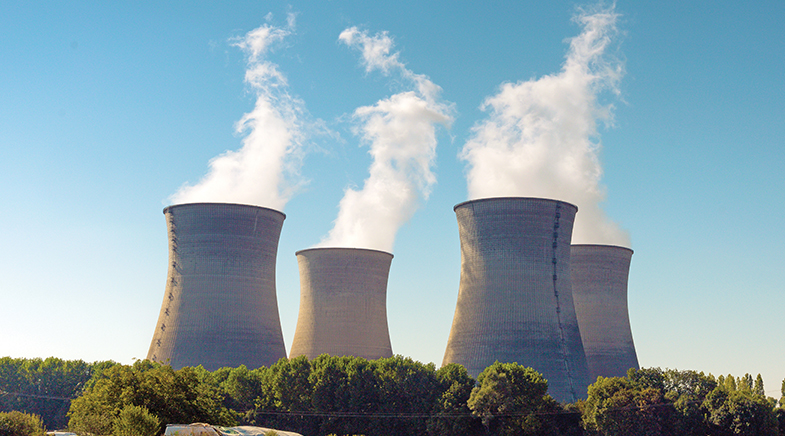Blame it on Niño
-
- from Shaastra :: vol 04 issue 09 :: Oct 2025

Extreme rainfall events batter India in El Niño summers, says a study.
El Niño, an abnormal climate pattern triggered by unusual warming in the tropical Pacific Ocean, has accounted for three out of five deficit monsoons in India over the last century. While El Niño has long been known to suppress overall monsoon rainfall in India, a new study has found that, counterintuitively, many parts of India experience extreme rainfall events due to El Niño.
In a paper published in September in Science (bit.ly/Monsoon-Hill), a team of meteorologists in the U.S. led by Spencer A. Hill, a climate scientist and Assistant Professor at the City College of New York, reported that India's core monsoon region in Central India witnesses more frequent extreme rainfall events during summers with El Niño conditions. They also identified similar signals in the southern parts of the country, specifically the strip that lies between the Arabian Sea and the Western Ghats.
Extreme buoyancy and extreme rainfall signals are primarily driven by shifts in the tracks of large swirling storms.
"This was counterintuitive, because it has been known since Sir Gilbert Walker [English physicist and statistician] in the 1920s that the same El Niño conditions tend to bring droughts to India for the summer as a whole. It turns out that both can be true at the same time: El Niño summers bring more days with no rain at all or very weak rain — and that is what causes the summer-total drought — at the same time that extreme rainfall days are enhanced rather than suppressed," Hill says.
During El Niño, warmer Pacific waters trigger unusual patterns of rising and sinking air, producing a large-scale suppression of seasonal rainfall across the Indian subcontinent. The scientists studied the India Meteorological Department's daily observational rainfall data that were available from 1901 to 2020. They further confirmed their inference by correlating satellite weather data available from 1979 to 2020. "The signals in extreme rainfall were largely the same," says Hill.
NIÑO VS NIÑA
Another important finding by the scientists is that the likelihood of days with extreme heavy rainfall is higher in El Niño years compared to La Niña years by 50% or more.
Notably, some of the drier parts of the country — particularly in the south-eastern region of India and in the far northwest, such as parts of Rajasthan — the extreme daily rainfall events are on expected lines, given the tendency for El Niño to bring summer drought. This contrasting pattern underscores El Niño's complex and regionally varied impact on India's monsoon rains, the paper says.
The scientists also tried to explain why there are more extreme rainfall days. They found that in the regions where El Niño brings increased daily extremes, there seem to be higher levels of what scientists call "convective buoyancy", which in common parlance means hotter and more moist atmosphere in the lowest few kilometres near the surface. Their preliminary results suggest that both the extreme buoyancy and extreme rainfall signals are, in fact, primarily driven by shifts in the tracks of large swirling storm systems, known as monsoon low-pressure systems.
Hill says the team now plans to study what causes such changes in convective buoyancy using a grant that it recently received from the U.S. National Science Foundation.
FUNDAMENTAL QUESTIONS
Not all weather scientists, however, are convinced by the theory. "The mechanism proposed — that there is more buoyancy during the El Niño years, and therefore you have more extreme rains — is interesting as a hypothesis," says Rajagopalan Balaji, hydrologist and Professor at the University of Colorado Boulder, U.S. "But the data and the results that they presented are less than convincing," says Balaji, who has been studying the Indian monsoon for decades. "I am not saying it is impossible, and it is indeed an interesting idea. But I would have liked it if they had pulled out an El Niño year or two and showed the increase in extreme events," he says.
Raghu Murtugudde, currently a Visiting Professor at the Kotak School of Sustainability at the Indian Institute of Technology Kanpur, believes that there are more fundamental questions about monsoon extremes that need to be examined. "There are broader questions about monsoon extremes for normal, surplus and deficit years. El Niño hardly explains 60% of the dry years," Murtugudde argues.
See also:
Have a
story idea?
Tell us.
Do you have a recent research paper or an idea for a science/technology-themed article that you'd like to tell us about?
GET IN TOUCH














